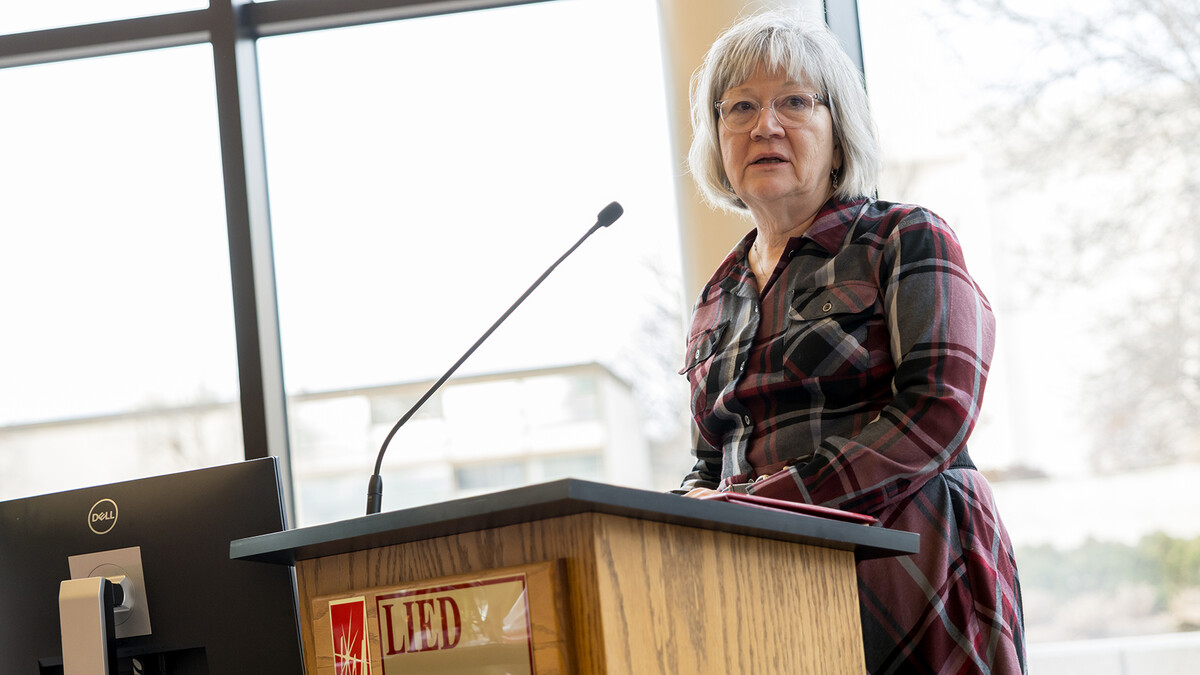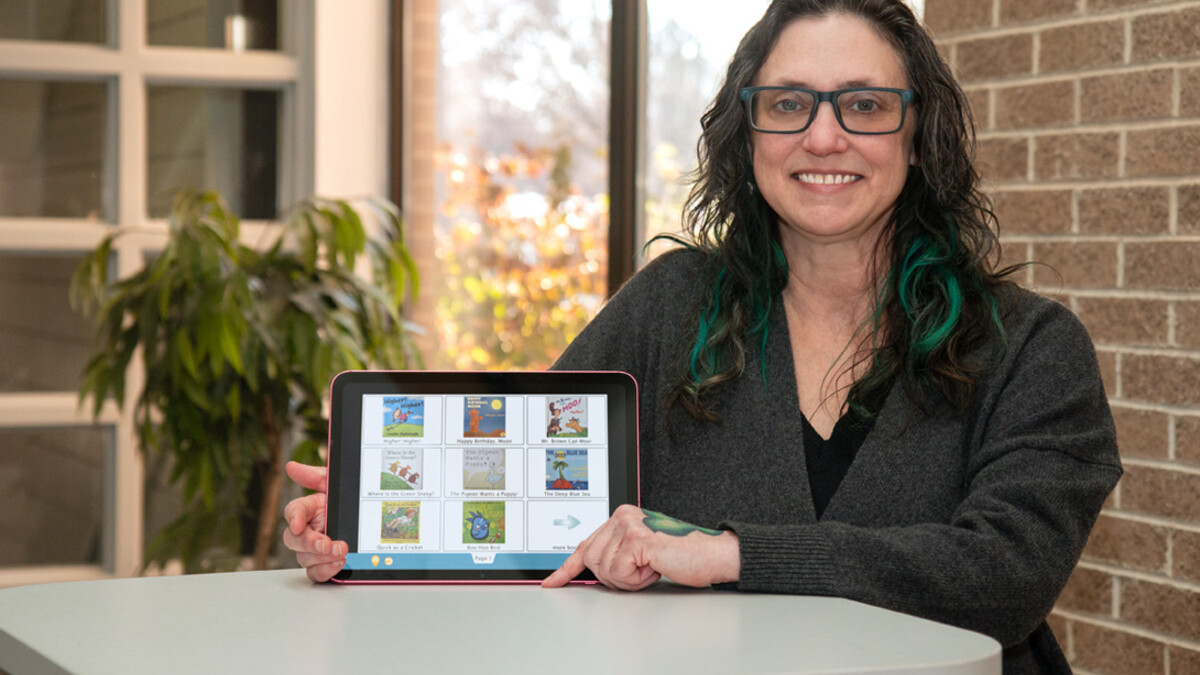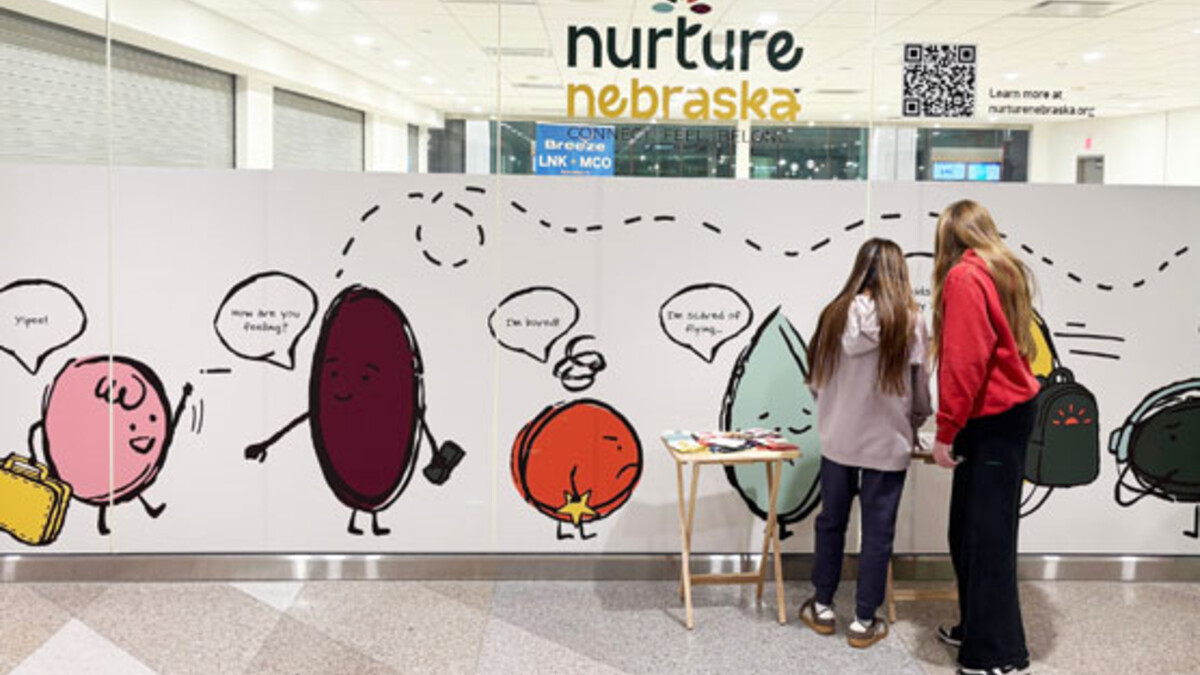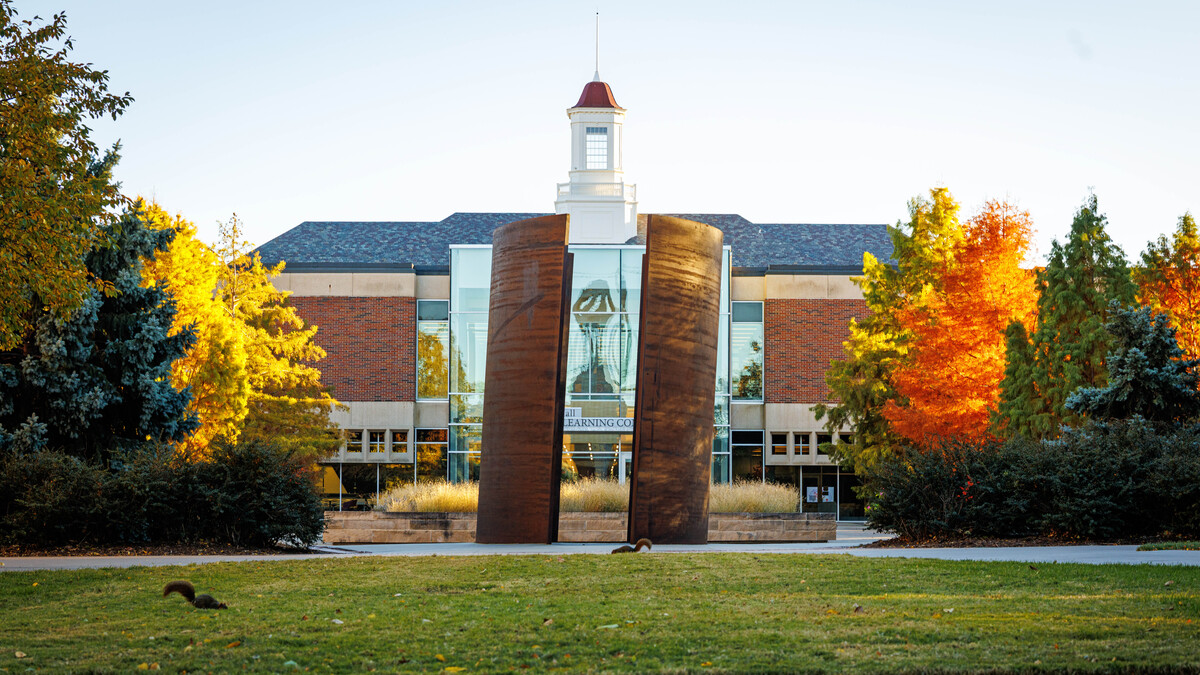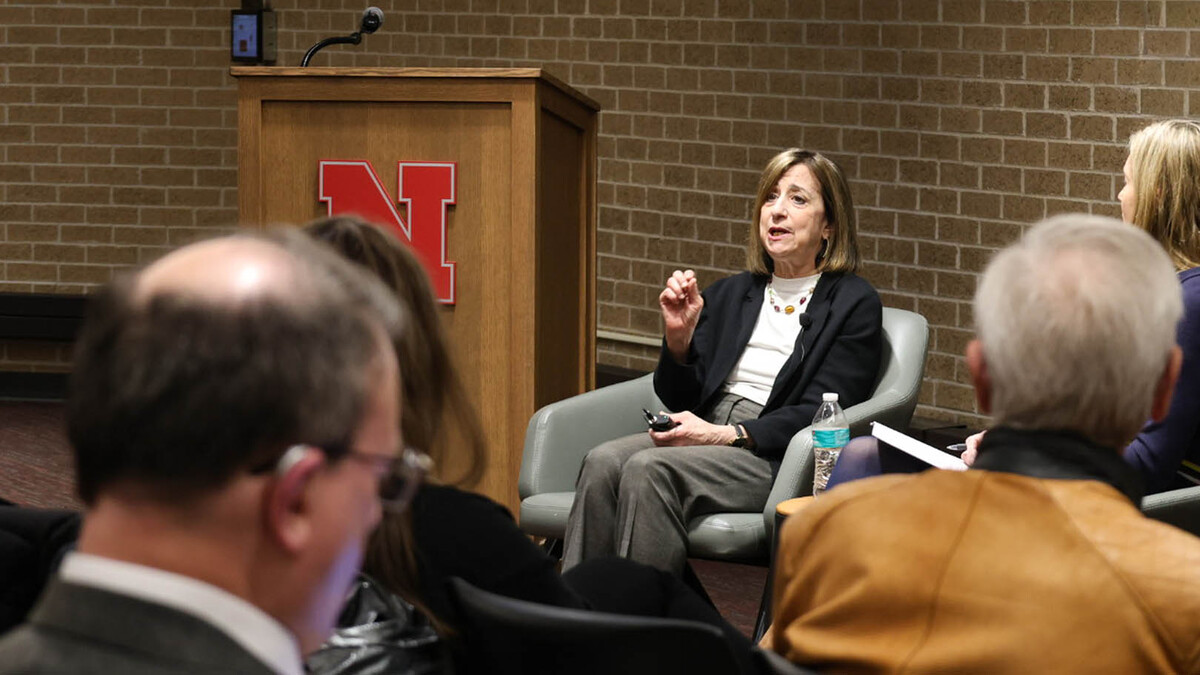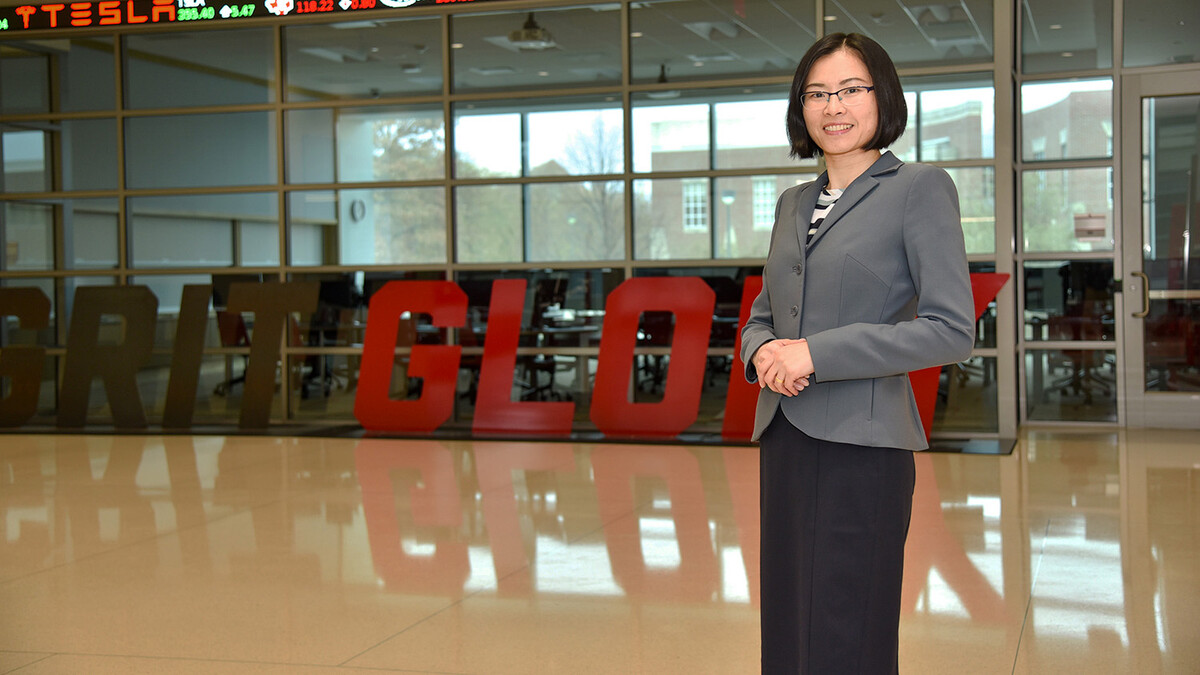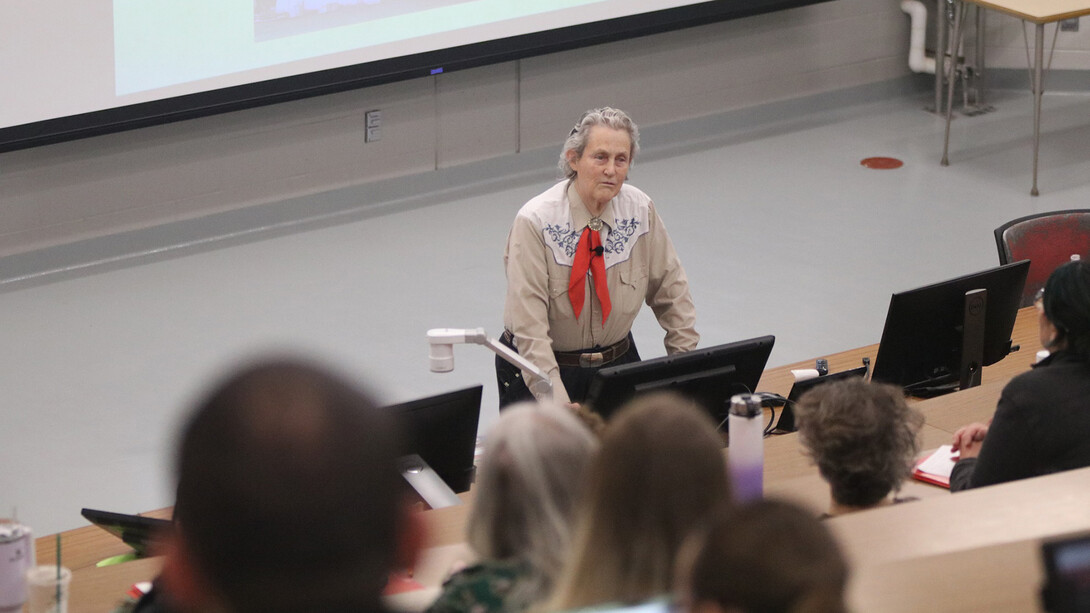
Temple Grandin is a world-renowned expert in animal welfare who transformed the academic understanding of animal behavior. Over the past decades, she’s brought about major changes in livestock industry procedures. When she recently addressed a gathering of Nebraska 4-H extension educators on East Campus, she discussed an additional topic of lifelong interest to her: the differing ways that individual young people learn.
It’s crucial, she told the Nebraska youth development specialists, that educators understand that different people learn in distinctively different ways — they can be roughly divided into visual thinkers, verbal thinkers and spatial thinkers.
Grandin, a professor of animal science at Colorado State University, is autistic and has written extensively on understanding autism. She is a visual thinker, she told the 4-H educators. When a problem arises with a piece of equipment, she said, don’t hand her a lengthy printout describing the problem. Instead, show her the piece of equipment. Her brain can then analyze the situation effectively.
Verbal thinkers, in contrast, process a situation by diving into textual descriptions. Spatial thinkers can use both learning approaches, she told 4-H educators gathered for a two-day set of sessions at the University of Nebraska–Lincoln’s Animal Science Complex.
The more that American education adopts flexibility to deliver differing instructional approaches, she said, the more society can open up promising opportunities for young people. The benefits can be especially great for young people with autism or similar conditions. She sees encouraging examples from around the country when young people are given such opportunities.
School shouldn’t isolate young people classified as “special needs,” she said. Use visual instruction and provide hands-on opportunities such as shop class to them. The results can be life-changing.
Her own life story illustrates the point. She benefited enormously by having a range of life opportunities during her youth. Mentors including her mother, a third-grade teacher and her high school science teacher all made a huge difference.
Brett Kreifels, an extension educator in attendance, said Grandin’s presentation connected directly with his work with young people as a 4-H educator for Douglas and Sarpy counties.
“I’m in youth development, so getting to look at different ways that kids learn is always something I’m interested in,” he said.
He can identify with Grandin’s self-description as a visual person not good with math.
“I’m one of those people,” he said. “I’m a visual person, so I get a look at something in order to do it. I don’t read it. So, her presentation really struck with me.”
One in three age-eligible Nebraska young people participate in 4-H. In 2022, the participation exceeded 140,000 children.
This flexibility in instructional approach can also boost the nation’s economy, Grandin said. The United States is losing out to numerous developed countries that are doing a better job of accommodating visual learning and building a workforce adept at, for example, designing and constructing state-of-the art equipment.
Grandin sets out her analysis on these issue in a new book, “Visual Thinking: The Hidden Gifts of People Who Think in Pictures, Patterns and Abstractions.”

